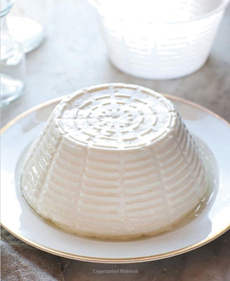TIP OF THE DAY: Ricotta Salata
|
Try it:
|
|
|
|
What’s your favorite use? Let us know! Ricotta production on the Italian peninsula dates to the Bronze Age (circa 3200–600 B.C.E. in Europe, and varying dates elsewhere). In the second millennium B.C.E., ceramic vessels called milk boilers started to appear frequently. Unique to the peninsula, they were designed to boil milk at high temperatures and prevent the milk from boiling over. The fresh acid-coagulated cheeses produced with these boilers were probably made with whole milk. Ceramic milk boilers were still used by Apennine shepherds to make ricotta as recently as the 19th century. Today metal milk boilers are used, but production methods have changed little since ancient times. By the first millennium B.C.E., the production of rennet-coagulated cheeses took over. Unlike the fresh acid-coagulated cheese, aged rennet-coagulated cheese could be preserved for much longer. The production of rennet-coagulated cheese led to a large supply of whey as a by-product. Cheese makers created a recipe that used a mixture of the whey plus milk, to make the fresh ricotta we know today. Because of its perishability, ricotta was most likely consumed locally, by the shepherds and cheesemakers. It is likely that its short shelf life did not allow broad distribution to urban markets; but even so, evidence from paintings and literature indicates that ricotta was known and likely eaten by Roman aristocrats as well. And at some point, ricotta was pressed and aged into ricotta salata. [Source]
|
||

